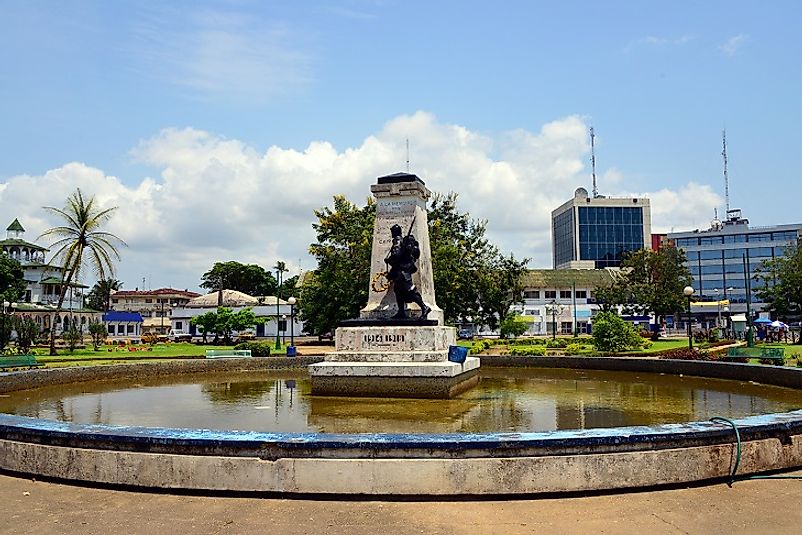Biggest Cities In Cameroon

Cameroon, officially known as the Republic of Cameroon, is a country in West Africa, it borders Nigeria to the west and Gabon, and Equatorial Guinea and the Democratic Republic of the Congo to the south. It borders chad to the northeast and the Central African Republic to the east. It has more than 1738 linguistic groups, and French and English are the official languages. Years of economic development and industrialization has seen the rise in population, increased infrastructure and urbanization, while Yaoundé is its capital city, Douala is the largest and most populated city in Cameroon. The following are some of the cities in Cameroon.
Biggest Cities in Cameroon
Douala
Douala is Cameroon’s largest and most populated city with a population of 2,446,945. It houses the largest port in west and central Africa, and an international airport. Its economy is also the largest in the Economic and Monetary Community of Central Africa (CEMAC) region, comprised by Cameroon, Gabon, Chad, the Central African Republic, Equatorial Guinea, and the Republic of the Congo. The city handles most the country’s imports and exports, shipping millions of tons of cocoa, timber, fruits and, oil. Although the city was inhabited before the arrival of the Germans and the Portuguese, it was after their arrival that the city began experiencing industrialization. The city experiences a lot of battles during World War 1 as the German who occupied it finally surrendered it to the French and British forces. The city has piped gas has the highest standards of living in Africa, being ranked the most expensive city in Africa.
Yaoundé
Yaoundé is Cameroon’s capital city and its second largest city with a population of approximately 2,440,462. The city is located in a hilly terrain between the Nyong river and the Sanaga River in the south-central parts of Cameroon. It sits 2,500 feet above the sea level. The city was inhabited by Belgium troops after the Germans surrendered it after World War I. Unrest at the coast and the cocoa crisis saw a rapid development of the town as it continued to house the government of Cameroon after independence. It is the country’s political and administrative capital and houses a large number of industrial organizations. It is mostly affected by flooding, and over the years the government has put in place measures to curb the problem, including building dikes and large drainage facilities. The Blackitude Museum, the Cameroon Art Museum, and the Cameroon National Museum are found in the city and provide a rich source of the country’s history.
Bameda
The city of Bameda is popularly referred to as “Abakwa” by the local people. It is located in the northwestern part of the country, and it is 227 miles northwest of Yaoundé. The city has an estimated population of 348,766. It is located in a hilly terrain and experiences cool climate. It is made up of seven villages and was subjected to the German colonialism in the 19th Century. It acts as a regional economic hub with financial institutions, and cultural sites such as museum and the Mankon Fon's Palace. The city attracts tourists due to the presence of the Menchum River waterfalls, as well as the pyramidal thatched shrine at Akum and the Kimbi River Game Reserve.
Bafoussam
Bafoussam is located in the western region of Cameroon, bordering the Bamboutos Mountains. The city has a population of 239,287, and it is the main city of the Bamileke people. The region around the city is known for farming of coffee, tea, and tobacco. It is a regional economic hub, housing financial institutions, markets, and administrative offices.
Biggest Cities In Cameroon
| Rank | Biggest Cities in Cameroon | Population |
|---|---|---|
| 1 | Douala | 2,446,945 |
| 2 | Yaoundé | 2,440,462 |
| 3 | Bamenda | 348,766 |
| 4 | Bafoussam | 239,287 |
| 5 | Garoua | 235,996 |
| 6 | Maroua | 201,371 |
| 7 | Kumba | 173,049 |
| 8 | Ngaoundéré | 152,698 |
| 9 | Nkongsamba | 104,050 |
| 10 | Buea | 90,088 |











